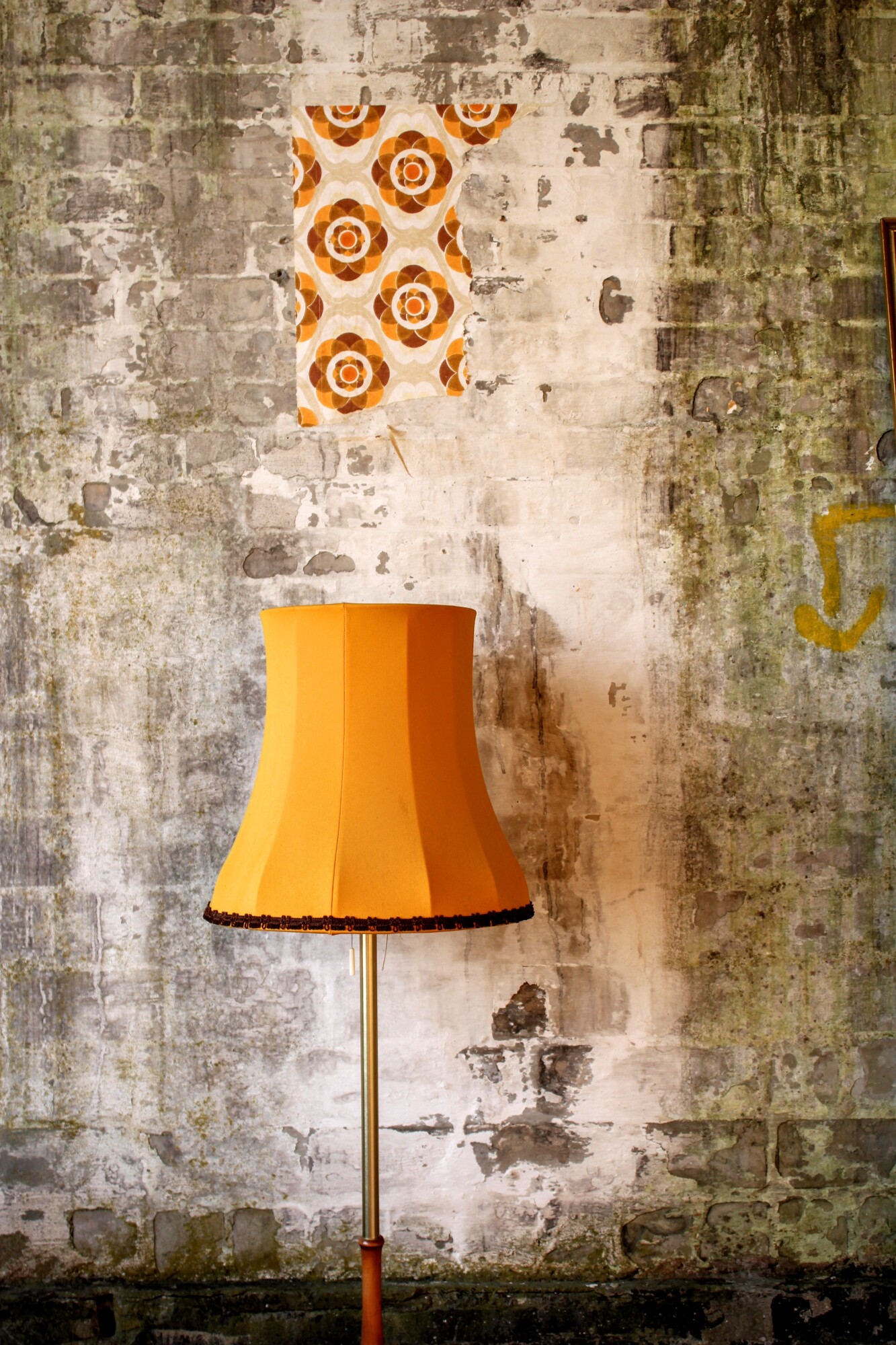The use of lampshades dates back as early as 1700 when public lanterns in Italy and Paris used the shades to direct light downwards.
Since then, lampshades have become much more than an item of function. Homeowners and decorators use the subtle beauty and design of a lampshade to add dimension, depth, and even color to a room. In fact, many feel that lampshade design can make or break the feel of a room.
So how do you choose a lampshade that compliments your space? Follow along to discover our favorite tips and tricks for how to choose a lampshade and ensure your decor is always on point.
How to Choose a Lampshade
Before you hit the shops and pick out your new lampshade, there are a few factors you’ll need to consider.
Elements like the amount of space you have to work with, surrounding decor, and the lamp base will play a large part in which lampshades will suit your area.
Purpose
The first thing you’ll need to decide is what purpose the lamp has in your selected space.
Are you adding the lamp to create ambient lighting or is it for esthetic value? This will impact what materials, colors, and even shape you choose.
For areas that need a little extra warmth, choosing lampshades with a sheer material will ensure more light makes it through the shade. This will ensure your area is more evenly lit.
On the other hand, if you are looking to redirect light or create more specific places such as a reading nook, you’ll want to choose materials and shapes that direct the light downwards to your reading material. This will be easier done with thicker or darker materials and wide-bottomed shades.
If you are unsure of the overall purpose of your lamp, consider the space you have to work with and go from there. If there are no overhead lights or the space is small this may impact your need for ample lighting over the esthetic appeal.
Color
The color and pattern of your lampshade are where you can really show off your style.
If your lamp base is already a bright or bold color, matching your shade to the lamp can be a great way to complete the look and make a stand-out piece. Alternatively, if your base is a neutral color like white or black, you’ll have much more freedom to add in those accent colors.
Study your color scheme to determine which colors will tie in well. As a general rule, you shouldn’t be introducing a new color in your lampshade. There should be at least one or two other areas in the room where the color is featured to tie it in.
Just like the lighter and heavier materials, you’ll want to consider the amount of light you need to shine through when deciding between light and dark colors.
Lighter colors will have the same effect as a sheer material, providing more ambient and even lighting, whereas dark colors will serve to deflect the light more.
Accents
The accents on your lampshade can help you take a functional choice and make it stylish or vise versa. For example, if you are looking for a black lampshade, consider how different inner lining and fixture colors can change the appearance.
Since black will allow less light through, choosing a gold accent on the inside can help bring some warmth into the light that does peak through. Not only will this add more function to the statement piece but the esthetics of a black and gold lampshade is dramatic and elegant.
Aspects like texture and fabric features can also add a touch of flair to what could be a relatively basic lampshade design.
The last element you’ll want to inspect before buying is the color of the fixtures that attach the shade to the base. Although these fixtures are typically hidden by the shade, certain styles will make the fixtures more obvious. For these situations, you’ll want to ensure the fixture color complements the base or shade.
For example, if your base is black and you choose a red shade for a pop of color, you’ll want to ensure the fixtures don’t stand out like a sore thumb. A black or red fixture color will help blend the two together, whereas a silver metal treatment may take away from the elegant appearance.
Shape
Once you understand the purpose of your shade and have chosen the ideal materials and colors, you can delve into the different shapes. The shape is the final aspect in directing light, adding dimension, and complementing the base.
There are several types of lampshades but the most popular shapes include the following:
Drum
This shape looks exactly like it sounds. The shade is round and reflects the appearance of a drum.
This is a perfect choice for a contemporary design and can complement a wider lamp base with ease. If your tabletop base is round or you are shading a floor lamp, the drum is a great choice.
Oval
The oval shape is similar to the drum except for the length. On an oval lampshade, the sides come down further than the drum, giving the shade a very traditional look.
This is ideal for small column applications such as wall lights or windowsills as the lengthened shade gives a clean and tidy look.
Cone
This lampshade idea is perfect for small spaces or tall lamps. The cone is a narrow shape that is tapered at the top.
Choose a lampshade with this design when working around nearby furniture to add a little light without overpowering the limited space.
Empire
This shape is the classic choice for bedside lamps, reading nooks, or floor lamps. The empire shape is significantly wider at the bottom of the shade than the top, allowing for light to spill out below, rather than evenly brighten.
The shame is quite classic but can easily compliment any decor. The shape is extremely functional and can be used to create that dimension and depth you’ve been looking for.
As a bonus, these shades can keep your nighttime reading routine alive without blinding your partner on the other side of the bed.
Square
The square lampshade is a perfect choice for more adventurous shape lovers. This lampshade idea can fit both traditional and modern homes and can take a basic lamp base up a level with style.
This shape may be tapered at the top and flair out at the bottom like the empire shade or remain consistent all the way down like the drum.
As a general rule, you’ll want to pair a square shade with a square base and a round shape with a round base. But of course, rules are made to be broken, so if your round or plain base is calling out for a statement, try pairing it up with a square shade for a little daring design.
Rectangular
The rectangular shape can be a great solution for narrow lamps that still suit a more square shade. Just like the square, you will find this in both tapered and non-tapered options to suit your lighting purpose.
Pair this shape with a contemporary or geometric base to add a pop of style and personality to your room.
Size
Last but certainly not least, you’ll need to find the perfect size for your base.
The first factor you’ll want to consider when choosing your size is the bulb. You’ll need enough space on either side of your bulb to ensure enough heat can escape. This will prevent your shade from discoloration or even burning.
Once you know what size of bulb works best in your lamp, add about two to three inches on either side for hazard prevention.
Table
The ideal height of your lampshade for a table lamp is 40% lampshade to 60% base. This ratio makes for an esthetically pleasing pairing that isn’t overpowering or underwhelming.
As for the width of your shade, you’ll want to choose an option that is wider than the widest part of your base. In a perfect world, this width would actually be twice the width of the base at its widest point. Of course, not all spaces will allow for this, so be sure you have taken ample measurements before selecting your shade.
Floor
The dimensions for your floor lampshade are much more personal. Because the base is so long, the ratio isn’t nearly as obvious as the lamps on your end tables. However, there are still general pointers that can help you ensure your floor lamp doesn’t end up looking like a man with a ridiculously small hat.
Measure the full height of your floor lamp base and divide this number by four. This quarter length is approximately the length you should be looking for.
In terms of width, the purpose of your lamp will be the driving factor. If you are looking to add brightness and ambiance to the room, go for a wider lamp. If the lamp is more of a feature piece in a small space, stick to the narrower options.
Choosing the Best Lampshades
Now that you know what factors impact how to choose a lampshade, you can set out with confidence on your lampshade design. From style to function, you’ll have a shade that complements your space and brightens your room.
Want more home design tips and tricks? Check out our other articles to discover all the secrets you need to create beautiful and functional home decor.






